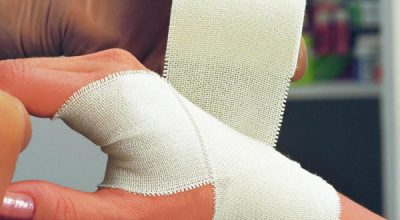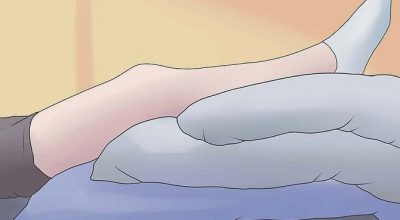The most common prescription for injuries has been given the acronym RICE. RICE meaning, R-est, I-ce, C-ompression, and E-levation. In some cases like simple strain, sprain, and other minor injuries, this regimen will do the trick.
This immediate treatment, however, works best in combination with other therapies depending on the injury.
REST
Rest might be one of the overused words but some people take “resting” for granted. People nowadays are too focused on getting things done. They work, and work, and work some more. And then, when the body gets tired, it also starts to hurt.

But here’s a tip. This is not magic but when you are hurt, or in pain, the first order of business is to relieve the load of stress, and that means stopping any activities that cause pain. For example, when your knees hurt, rest that knee. When your back hurts, treat your back by resting. In short, if it hurts, rest. Depending on the injury, that can mean not sitting for a long period if your back hurts, or not jogging for a couple of days if your leg hurts.
Rest. The rest that we are talking about here is relative rest. Rest doesn’t mean immobilizing the affected part too long or not moving permanently. You can move or exercise it a bit just to promote circulation because controlled movement promotes healing too!
ICE
The use of ice packs or cold packs reduces swelling and bleeding through blood vessel constriction. It also works as a comfort measure to relieve pain. Less swelling promotes healing and reduces pain. Why? It stops the swollen parts from putting pressure on the pain receptors at the affected site. Furthermore, the ice’ numbing effect can provide you a nice break from the pain and discomfort you’ve been experiencing!
Reminder: Ice packs should be used for no more than 20 minutes. You can use it again and again, but the duration should only be 15 to 20 minutes. Using ice for more than 20 minutes can cause tissue damage or even frostbite! Also, we recommend you to use and wrap a towel or a piece of cloth around the ice pack to protect your skin.
COMPRESSION
 Compression, along with the use of ice and elevation, can help reduce swelling by slowing bleeding and limiting the accumulation of blood and plasma near the injured part. It also provides pain relief by keeping the joint supported and aligned. Without compression, the fluids from the adjacent tissues seep into the injured site.
Compression, along with the use of ice and elevation, can help reduce swelling by slowing bleeding and limiting the accumulation of blood and plasma near the injured part. It also provides pain relief by keeping the joint supported and aligned. Without compression, the fluids from the adjacent tissues seep into the injured site.
To apply compression safely:
- Use an elasticized bandage for compression, if possible.
- Wrap the injured part firmly, but be careful not to wrap the area so tightly that the blood supply is impaired. Signs of impeded blood supply include numbness, pain, cramping, and bluish discoloration or dusky nails. Remove the compression bandage immediately if any of these symptoms occurs. Don’t put the compression bandage until all signs of impaired circulation disappears. Then wrap the area again —less tightly this time.
ELEVATION
 It usually helps to elevate an injured knee, for example, to the level of or above the heart. Elevation helps by reducing swelling because gravity might cause it to pool and gather on one area instead of circulating in your system.
It usually helps to elevate an injured knee, for example, to the level of or above the heart. Elevation helps by reducing swelling because gravity might cause it to pool and gather on one area instead of circulating in your system.
To elevate your leg, you can use pillows under your leg while watching television, or sitting or whenever you are sleeping.
These components, Rest Ice Compression and Elevation works best when used in combination with one another and with the help of other therapies.
For other pain relieving treatments, contact Pegasus pain management and see how you can be treated.
References:
Halpern, B., Tucker, L., Hughston, J. C., & Brody, J. E. (2003). The knee crisis handbook: Understanding pain, preventing trauma, recovering from injury, and building healthy knees for life. Emmaus, PA: Rodale Press.
Darrow, M. (2001). The knee sourcebook. Chicago: McGraw-Hill Companies, The.
Benzon, H. T., Rathmell, J. P., & Wu, C. L. (2013). Practical management of pain (5th ed.). Philadelphia, PA: Elsevier/Saunders.
Dupont, D. Reconsidering RICE as a treatment option for athletes. Retrieved December 3, 2016, from https://breakingmuscle.com/learn/reconsidering-rice-as-a-treatment-option-for-athletes
